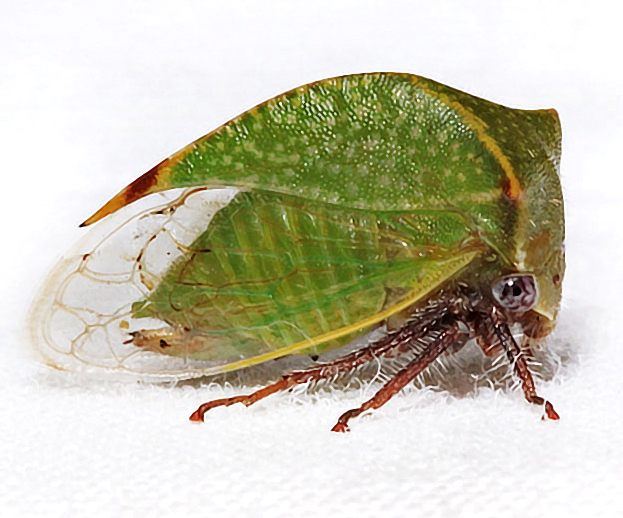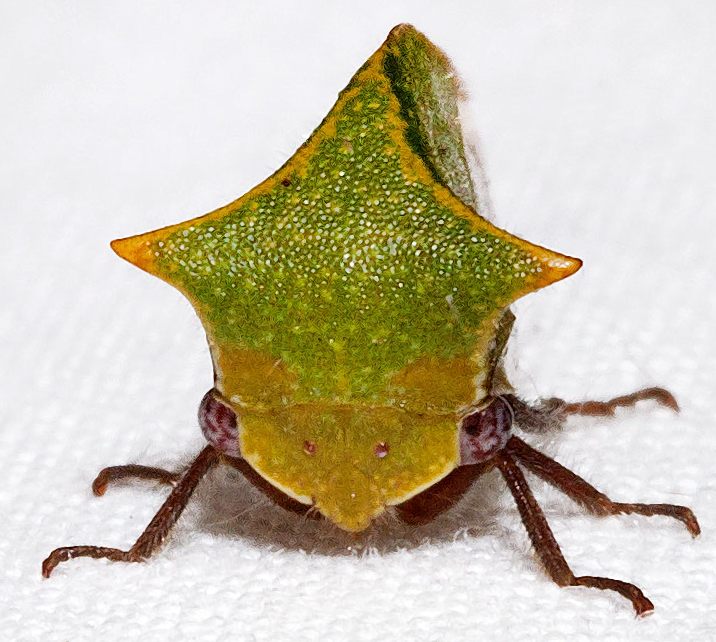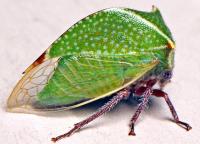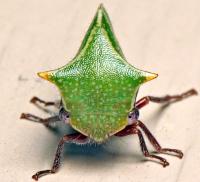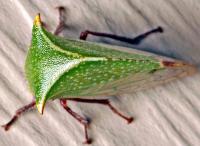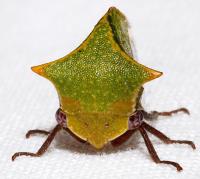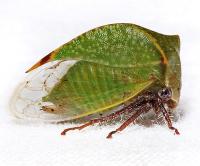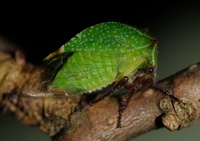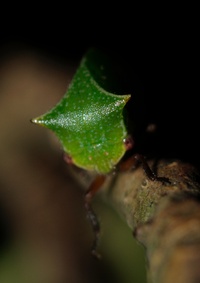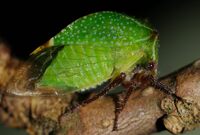| Comment: This species was confused and misidentified for years with Hadrophallus bubalus and, together with Stictocephala bisonia, form a bit of a visual complex of species that look similar to one another. However, there are some key criteria that can be used to help separate the three species, and the subgenital plates and pregenital sternites of these three genera are also different from one another. (S. Hendrix pers. comments)
bubalus: the pronotum is very pubescent and strongly arched (but not anteriorly very tall). Has green legs. Overall small appearance. subgenital plates
bisonia: the pronotum is not pubescent, is strongly arched, and anteriorly is very tall. Has green legs. Overall large appearance. Stictocephala subgenital plates
abnorma: the pronotum is not pubescent, is strongly arched, and anteriorly is somewhat tall. Has red legs. Overall large appearance. subgenital plates |

 »
»